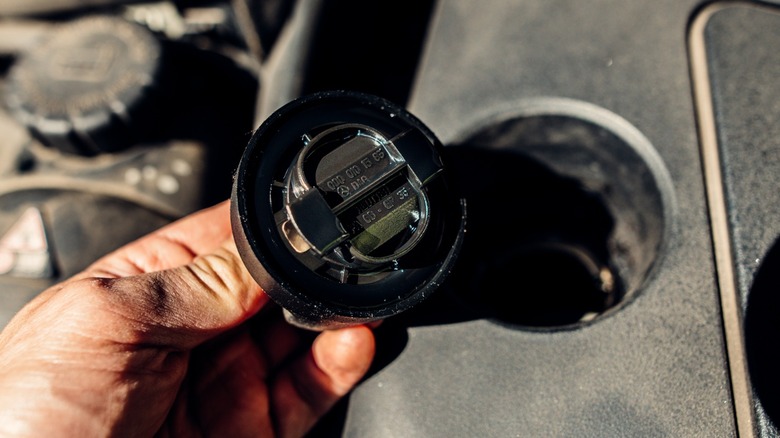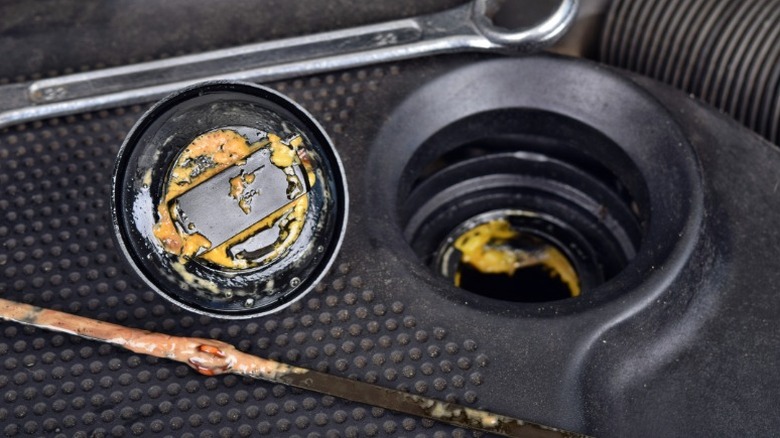
If you've ever removed your oil cap during a routine check or oil change and noticed a creamy white or yellowish, almost mayonnaise-like substance underneath it, you're not alone. You'd be well within your rights to be curious as well as grossed out. This buildup of sludge is a mix of oil and water vapor that has emulsified into a thick, light paste. It's definitely off-putting, but it doesn't necessarily indicate a big problem with your vehicle.
Engines naturally produce water vapor as part of the
combustion process. Normally, this moisture exits the engine via the exhaust system. However, under certain conditions, water vapor can condense inside the engine. When it mixes with oil and lacks the opportunity to fully burn off, it creates that funky residue. This substance will typically only collect on cooler parts of the engine.
The most common cause of oil cap sludge is short-trip driving, especially in cold climates. We're not trying to add to the debate over warming up your car in the winter, but if you're only driving your vehicle a few miles at a time, the engine may not be reaching its full operating temperature. This prevents moisture from evaporating out of the system, so instead it condenses and accumulates as sludge. The sludge isn't necessarily harmful, but it can be a sign that your driving habits should change to avoid destroying your engine. Taking your car for a longer drive once or twice a week can help the engine reach a sufficient temperature to burn off excess moisture.
Read more: These V6 Engines Put The LS1 V8 To Shame
Should You Worry About Oil Cap Sludge?

Before you grow too comfortable with the white goop, know that some serious conditions can cause a similar occurrence. Chief among these is a blown head gasket. When a head gasket fails, coolant can leak into the engine oil, creating a similar milky emulsion. Unlike harmless condensation sludge, this common oil contaminate is a major issue that requires immediate repair. Left unchecked, coolant-contaminated oil can destroy internal engine components due to loss of lubrication.
So, how can you tell the difference between sludges? If you're only seeing the substance on the oil cap — not on the dipstick or oil pan — and the engine is running smoothly with normal coolant and oil levels, it's likely just due to condensation.
It's always better to err on the side of caution, so monitor your oil and coolant levels, and check the appearance of your oil on the dipstick. If the oil on the dipstick appears milky or you're losing coolant without visible fluid leak problems, it's time for a mechanic to inspect the vehicle. A cooling system pressure or compression test can confirm a blown head gasket or internal coolant leak. If the sludge persists after changing your driving habits or you see signs that the oil throughout the engine is contaminated, don't ignore it. In the end, the white sludge under the oil cap is your engine's way of telling you something — more often than not that it simply wants to be driven a bit more.
Want more like this? Join the Jalopnik newsletter to get the latest auto news sent straight to your inbox...
Read the original article on Jalopnik.











